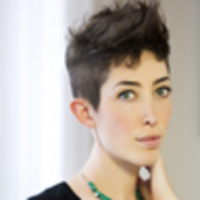
At the height of her John Hughes period, when Molly Ringwald couldn’t go outside without running into an explosion of flashbulbs, America’s prettiest princess had but one role model in her life.
“J.D. Salinger,” said the sweet-faced actress, who has not changed one iota in the last three decades. We were in a dark corner of the lobby of a posh New York hotel, and Ringwald, fiercely press-shy, had just tentatively removed her yellow sunglasses to reveal that iconic mug, which most women between the ages of 15 and 50 know as well as their own.
“When you say you’re 40, you can’t call yourself an ingénue any more,” she said. “So I wondered, what comes after that?”
ADVERTISEMENT
Some child stars grow up to be drug addicts. Others go the reality-television route. A precious few mature into serious actors, sustaining careers into adulthood. But it’s safe to say that, among all the Brat Packers and teen celebrities of every generation, only Molly Ringwald spent her youth idolizing a New Hampshire literary recluse—and channeled those inclinations into a shockingly normal-seeming life.

Ringwald was in New York promoting her first book, Getting the Pretty Back: Friendship, Family, and Finding the Perfect Lipstick, a combination memoir and lifestyle guide that seamlessly blends exercise tips with stories from her adolescence and early adulthood. In the fashion of much celebrity nonfiction nowadays, Ringwald doesn’t just tell stories—how she met her husband, for example—but turns them into parables for how all of us can live well. She mixes these with other ephemera, like her favorite bouillabaisse recipe and her guide to how to tie a scarf, and lovely illustrations by her friend Ruben Toledo. The book is split into nine chapters as an homage to Salinger’s Nine Stories, one of her favorites.
According to the jacket copy, Getting the Pretty Back is all about how “getting back in touch with the pretty girl that you once were might just make you realize she really isn’t so far from the woman you are today.” Ringwald came up with the idea for the book on the eve of her 40th birthday and wrote it while she was pregnant with twins. Although she shows no physical signs of having aged since Sixteen Candles (see Chapter 3, “the skinny on skin care”), she hopes “it’s finally getting through people’s heads that I’m not 16 anymore.”
We met a few minutes after noon last week, and because it was the end of a long trip in the city, Ringwald allowed herself one glass of rosé, plus a small cheese plate for lunch. She wore a striped, nautical-style top with jeans and a yellow cardigan; her hair was long and red, as ever, with straight, blunt bangs. She made me swear not to identify the hotel because she was afraid of attracting paparazzi the next time she’s in town.
“I never felt terribly comfortable in the public eye,” she said. “I always thought my sister should have been the celebrity, not me. I found it all very frightening.” Going from having all the focus on her to a period of anonymity was jarring, she said. The highs were daunting, the disappointments were devastating. “I wish I had been more prepared, both for success and for failure, when I was younger,” she said.
It was Ringwald’s family that kept her feet on the ground once she became Hughes’ golden girl, appearing in 1984’s The Breakfast Club and then a slew of other films that helped to define adolescence for a generation, and it is her bigger family—including husband Panio, a writer and MBA candidate at Stanford, plus their three children—that anchors her now.
A lifelong reader, Ringwald came to worship Salinger during her teenage years and moved on to “obsess” over F. Scott Fitzgerald in her twenties. “When I was growing up, I always had a grudge against Hemingway because he was mean to Fitzgerald,” said the Pretty in Pink star. “I really looked toward writers more than actors.” She nearly studied literature and psychology, but got sidetracked, decided to “can the whole college thing,” and ended up living in Paris for a while instead.
She has written periodically throughout her life—an occasional book review or short piece for Esquire—but only recently has gotten into a serious habit. “At some point, my therapist told me I should stop dating writers and be a writer,” she said, and that’s how Ringwald the author was born. “I finally feel like I can call myself a writer now, rather than writing being just something I do on the side, as a dilettante.” Although she never reads anything written about herself, she has become an enthusiastic blogger lately, typing out occasional 200-word entries at IAmMollyRingwald.com.
Beyond that, she reads a smattering of news sites, considers herself a “liberal, fairly political but not excessively,” and recently signed up for a watercolor-painting class. She also stars on the ABC Family show The Secret Life of the American Teenager, as a mother to two girls.
The book, she said, is about being an “It-woman” once you’ve grown out of being an “It-girl,” a daunting prospect but one about which she didn’t have any choice. “When you say you’re 40, you can’t call yourself an ingénue any more,” she said. “So I wondered, what comes after that?”
Plus: Check out Book Beast for more news on hot titles and authors and excerpts from the latest books.
Rebecca Dana is a senior correspondent for The Daily Beast. A former editor and reporter for The Wall Street Journal, she has also written for The New York Times, The New York Observer, Rolling Stone, and Slate, among other publications.





